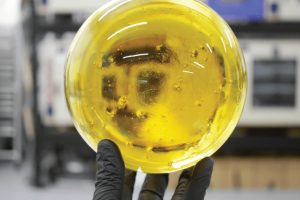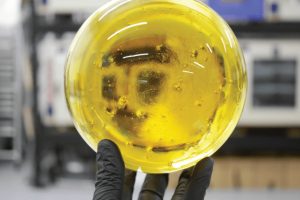Ideal decarboxylation conditions found to maximize CBD, other cannabinoids
FeaturedIndustrial Hemp NewsInternational NewsMarijuana Laws, Regulations, & Politics November 25, 2020 MJ Shareholders 0



Want more on the latest cannabis research? Check out our Science Symposium, part of MJBizCon 2020, available on demand.
A version of this story originally appeared at Marijuana Business Daily.
How hot is just hot enough? As with so much else involving cannabis, it’s a challenging balance.
Cannabis producers need precise manufacturing processes to maximize concentrations of CBD in finished products.
Recent decarboxylation research, carried out at Callaghan Innovation, a government agency supporting technology businesses in New Zealand, describes the ideal conditions—temperature, time, and amount of plant material—to optimize the concentrations of target cannabinoids during decarboxylation.
Decarboxylation converts cannabidiolic acid (CBDA) and delta-9 tetrahydrocannabinolic acid (THCA) to their neutral, or active, forms: CBD and THC.
This chemical reaction occurs naturally over time, but can be accelerated with high temperatures, light and oxygen.
While smoking or vaporizing cannabis efficiently decarboxylates cannabinoids, the range of oil-based edible products on the market requires decarboxylation prior to use; it is the neutral forms that cross the blood/brain barrier, where they have their psychoactive and therapeutic effects.
THCA showed the fastest rate of decarboxylation—almost double that for CBDA at some temperatures—a rate that increased at higher temperatures.
The authors concluded that the conversion of a cannabinoid to its neutral form is dependent only on the concentration of the cannabinoid being decarboxylated.
Oxygen and high temperatures led to the decomposition of THC and CBD over time. For example, temperatures above 100oC led to a drop in THC concentration as the cannabinoid was converted to cannabinol, a known breakdown product of THC and an indicator of poor cannabis storage.
The authors recommend decarboxylation conditions to maximize the concentrations of THC or CBD. The most favorable conditions for converting CBDA to CBD used lower temperatures (90oC) and longer time (12 hours).
In contrast, although THCA is converted to THC at low temperatures, the ideal temperature was 160degrees Celsius, at which point the maximum concentration of THC occurred in under seven minutes.
The amount of plant material being decarboxylated also affected the rate of conversion, with the reaction slowing down as more material was included in the container.
The loss of THC and CBD at higher temperatures was reduced by heating material without oxygen present, as many manufacturers accomplish by using supercritical CO2 extracon.
MJ Shareholders
MJShareholders.com is the largest dedicated financial network and leading corporate communications firm serving the legal cannabis industry. Our network aims to connect public marijuana companies with these focused cannabis audiences across the US and Canada that are critical for growth: Short and long term cannabis investors Active funding sources Mainstream media Business leaders Cannabis consumers










No comments so far.
Be first to leave comment below.